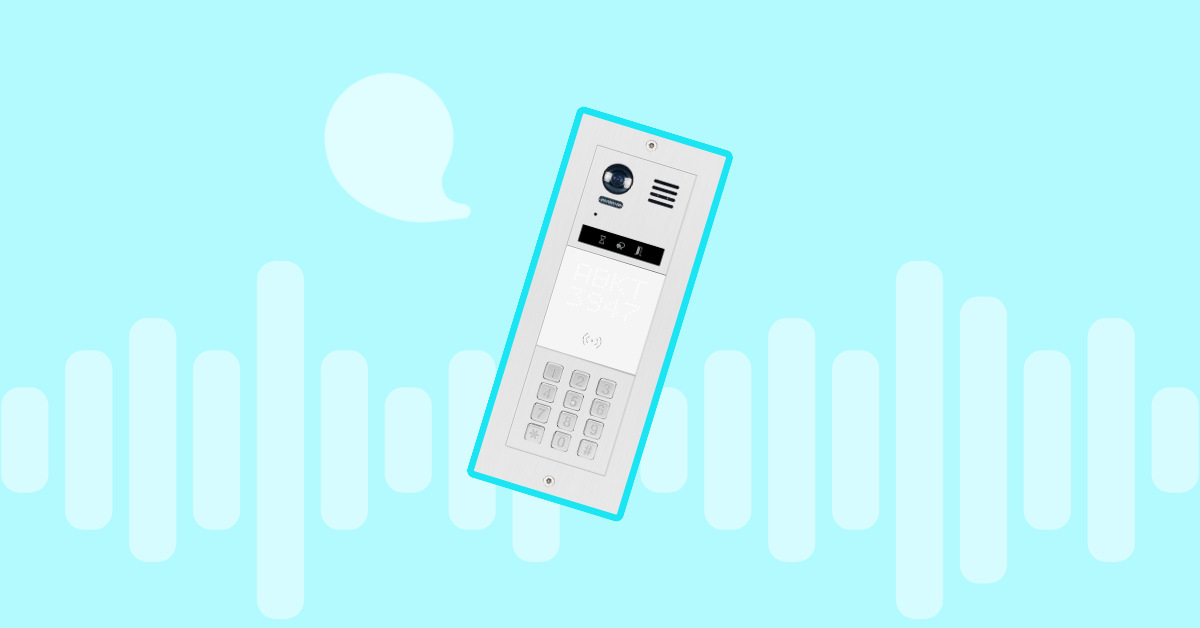
Table of contents
Door buzzers – also called intercoms – are quite popular in the business world. Mostly used as part of security systems, companies use them to grant access to specific people to secured areas. Most people have used them at least once and some of us use them every day to enter an apartment building, an office, school or a warehouse.
In the early days of VoIP implementation, losing access to door buzzers and security systems was one of the disadvantages in switching to VoIP. In 2018, that’s no longer the case. The industry has come a long way from the time when upgrading to VoIP meant losing essential features like emergency calling, door buzzers, faxing etc.
As a matter of fact, you can now integrate door buzzers and intercoms into your existing VoIP or UC environment. You may need to purchase new components or re-purpose existing hardware to suit the new network. Connecting the door buzzer to a VoIP phone also gives you access to new features that were not available with analog systems.
Many people think that these door buzzers are a niche product but the reality is that businesses use them everywhere. Hospitals, hotels, schools, warehouses, retirement communities or assisted living facilities are just a few examples that come to mind. They’re also used to communicate in areas such as elevators or scientific laboratories as part of emergency systems.
How to Connect Door Buzzer to a VoIP System
Hooking up the door lock to an IP system varies from provider to provider. In most cases, it’s almost the same as adding a new SIP phone. Just like with IP phones, there are many manufacturers who make such modern door buzzers. Some may be compatible with the VoIP service you use while others do not. The easiest way to find the hardware you need is to ask your VoIP service provider. They will most likely have a list of compatible devices for clients like your business.
The system consists of 3 main parts – the door buzzer or intercom itself, the actual locking mechanism and your IP phones. Your new door buzzer will have instructions for setting up the device, how to connect it to the locks and even help you set up the device on your network. Once you’ve finished installing, the intercom functions like any other IP phone on the network. Some intercoms have extra features you might find useful like backlit buttons, weather resistant finishes, auto-provisioning etc. Almost every intercom is compatible with the widely used SIP protocol.
How Does it Work?
Door buzzers generally come with their own web interface for configuration. You can change settings like the volume of the buzzer, how long it should ring, which button unlocks the door and for how long from this page.
A typical use case may look like the following. Suppose a business has set up the intercom at the entrance to their stock warehouse to protect sensitive inventory. A visitor can press a single button which initiates a call to the phone(s) within the building. Once you determine the visit is authorized, an employee can buzz the door open.
Advantages of Using a Door Buzzer
The primary reason for using such intercoms is to enhance security within a business or workplace setting. Not all businesses have or need spaces where the public is free to wander like a storefront or even cafe. Other organizations need to secure specific areas only. Whatever the reason, intercoms are an excellent method to ensure that only authorized users have access.
But using intercoms gives other benefits as well. For instance, employees don’t waste time answering the door each time the bell rings. This often comes in useful in buildings with multiple offices. The person ringing the bell may be looking for some other business, not yours. In this case, a staff member has just wasted 5 minutes walking to the door, answering the query and then sitting back down at their desk. If it happens quite often in your office, the wasted time adds up quickly.
Switching to VoIP brings flexibility to this security system as well. For instance, you can change the phone number which answers the door buzzer when the situation warrants it. You can even set up hunt groups for the call from the intercom so the nearest person or whoever is free can buzz the visitor in. This means you ensure that a customer or business partner isn’t left standing on the doorstep without an answer because someone isn’t at their desk at the time.
Most service providers will have helpful resources for businesses looking to set up door buzzer and integrate them with the IP system. Give it a test run and see if your business can benefit from having a door buzzer as well.
Read this post in: Español
More from the blog
Want to improve your business communication?
Unlock enterprise-class call center power at affordable prices – no hardware, no delays, no surprises!






